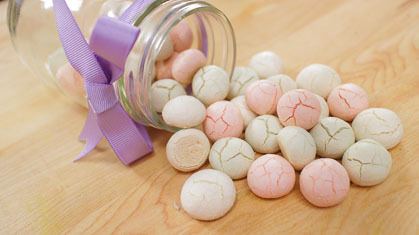Alternative names ขนมผิง Place of origin Thailand Invented 17th century | Course Dessert Created by Maria Guyomar de Pinha | |
 | ||
Main ingredients Tapioca flour, coconut milk, and egg yolk Similar Kaeng khae, Kuaitiao khua kai, Namkhaeng sai, Khanom thuai, Yam naem | ||
Khanom phing (Thai: ขนมผิง, [kʰā.nǒm pʰǐŋ]) is a round Thai cookie consisting of tapioca flour, coconut milk, and egg yolk.
Contents
History
Khanom phing is believed to have been introduced to Thailand by the Portuguese in the 17th century.
In 16th century coinciding with Somdet Phra Narai Maharat (1656 to 1688), Maria Guyomar de Pinha (or Thao Thong Kip Ma) was born and lived in kAyutthaya. She was a woman of mixed Japanese-Portuguese-Bengali descent. When she worked at the palace, she created many types of dessert by adapting from Portuguese recipes. Then, she taught female cooks how to make desserts such as foi thong, thong yip, and khanom phing.
Evolution
The original Khamon phing had a sweet taste, fragrant, brown color, and immediately melted in the mouth. It was different from today, as now the cookie has more color such as pink, green, and yellow. In addition, the dessert is harder than the original. It look like this because it needs to be protected from breaking when packed for sale. The original Khanom phing was packed in a small jar and adorned with ribbons to give as a gift on New Year's Day.
